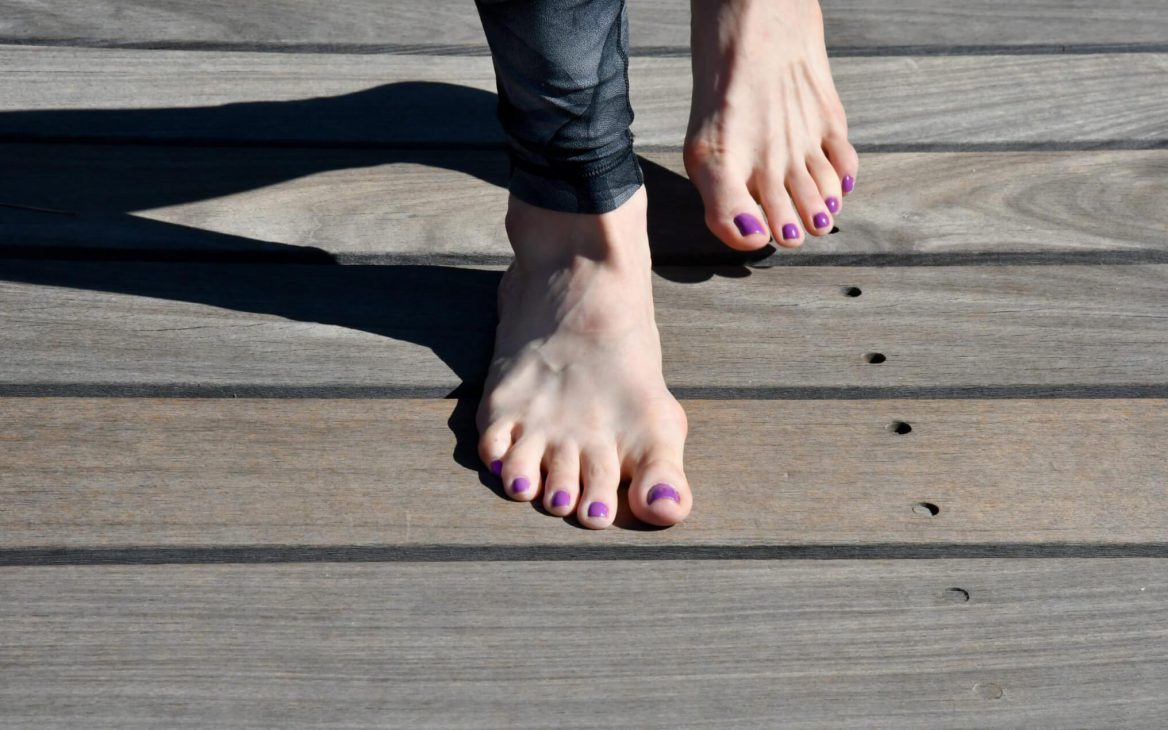This pose is worth getting into your repertoire, for it tones the organs and helps develop uddiyana bandha. It is the first of the arm balances to learn in the practice of Ashtanga Vinyasa Yoga.
Although it seems like the real challenge is arm strength, for many students, the limitation is with low back and hip flexibility.
Preparation involves working three essential areas:
1.) hip flexion
2.) lower back flexion
3.) hand/wrist/shoulder stabilization
To gain greater flexion in the frontal hips and flexion (rounding) in your lower spine, practice this series of poses:
Adho Mukha Virasana (child’s pose)
Utkatasana (Chair pose)
Uttanasana (Intense Stretch)
Malasana (Garland Pose)
Marichyasana I
In Uttanasana, keep your feet hip width apart, bend your knees and place your hands to the floor. With back rounded focus on exhalation as bhujapidasana involves the apana pattern of the breath—the exhalation pattern.
Of these five poses, malasana is the most critical, for we can think of bhujapidasana as an elevated squatting position. In malasana, be sure to pin your knees close to the side of your trunk. This squeezing action is what helps maintain the lift in bhujapidasana. In the squat position, keep your feet parallel and keep the inner big toe region in contact.
To prepare your hand/wrist and shoulder do the following series of poses:
Adho Mukha Svanasana (Downward Dog)
Adho Mukha Dandasana (Upper Plank pose)
Chatturanga Dandasana (Lower Plank Pose)
Adho Mukha Vrksasana (Handstand) at wall
In each variation, be sure to lift the lower forearm upward away from the wrist as you spread the bones of your hands wide. Practice spreading the skin and musculature at your wrist, thereby widening the carpal tunnel. Hold the outer elbow area firm, that is, draw your outer arm inward toward your inner arm.
When entering bhujapidasana, enter from standing with knees bent. With your arms set between your legs, pin your hands to the backs of your heels and push your shoulders through your legs (like you are putting on a backpack!) Set your legs as high up the outer arms as you can. You can learn the essential action of a pose by way of its name. The “Shoulder Pressure Pose”, implies that the pose is held stable by firmly holding the legs against the outer arms. If the legs slide down the arms then you drop down the fire-pole! Keep your legs pinned against your upper arms as you set your hands parallel and transfer your weight to your arms. This is the moment of truth. Many lose height and lift at this point and the weight of the body crumples down toward the hands.
Some of you can practice by placing your hands onto the flat side of two blocks in order to gain enough elevation to lift your hips and torso.
Once you lift your feet up, cross at the ankles and latch them firmly together (the lower foot lifts the upper foot ). Practice drawing your feet vertically upward and also practice sliding your latched feet forward. These two movements activate different parts of the spinal column, spinal ligaments and discs.
Once you can cross your feet one way, then learn to reverse and cross in the opposite way.


